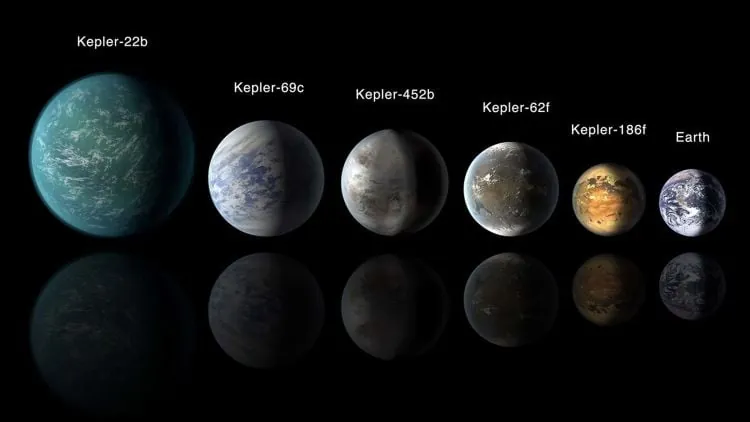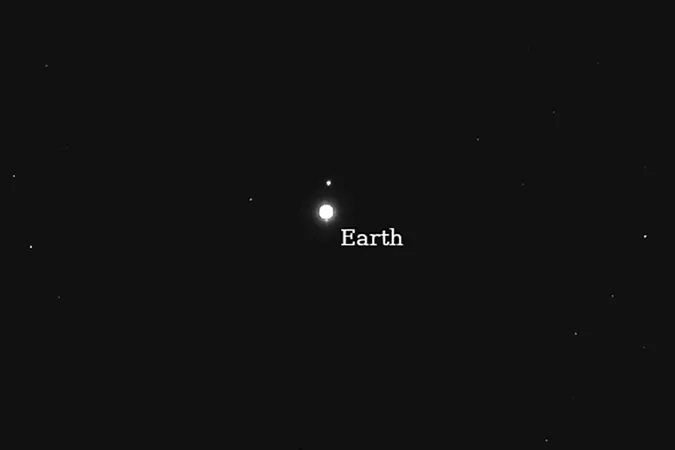
Revolutionizing Exoplanet Exploration: Unraveling the Oxygen-Ozone Connection
2025-08-31
Author: Mei
The Key to Detecting Life Beyond Earth?
A groundbreaking study published in *Astronomy & Astrophysics* reveals exciting new insights into how the interplay between oxygen (O2) and ozone (O3) in exoplanet atmospheres could unveil signs of life. An international team of researchers is exploring innovative techniques to discern Earth-like atmospheres, which could transform our quest for extraterrestrial biosignatures.
Decoding the O2-O3 Relationship
The researchers employed advanced climate models to analyze the intricate relationship between O2 and O3, noting that their connection is non-linear. Simply put, low levels of O2 correspond to low levels of O3 and vice versa. By examining various star types—from massive O-type stars to the Sun-like G-type stars—the study provides crucial insights into how these gases can indicate potential life on distant worlds.
Building on Previous Discoveries
This recent paper is the third in a series by the same research team, focusing on the O2-O3 dynamics in Earth-like atmospheres. The first paper tackled the O2-O3 correlation, while the second explored the influence of nitrous oxide (N2O) on this relationship. The latest installment turns the spotlight on methane (CH4) and its effects on atmospheric chemistry.
Methane's Double-Edged Sword
The findings indicate that fluctuating methane levels can significantly alter the O2-O3 relationship—similar to the effects of N2O. In certain model scenarios, high concentrations of CH4 in warm star systems can lead to its conversion into water (H2O), subsequently influencing atmospheric temperatures and O3 levels. The complexity of these interactions necessitates a nuanced understanding of atmospheric chemistry when using O3 to infer O2 presence.
The Search for Earth-like Worlds
Among the nearly 6,000 confirmed exoplanets, several stand out as potential Earth twins, like Kepler-186f, Kepler-1649c, and TRAPPIST-1e, which sit at distances of approximately 580, 301, and 40 light-years from Earth, respectively. Notably, these exoplanets orbit M-type stars, which are smaller and cooler than our Sun, revealing a surprising trend where many of the Earth-like candidates revolve around these stars.
Long-Lived Stars: A Silver Lining for Life?
Although M-type stars may not resemble our Sun in characteristics, they have incredibly long lifespans—potentially trillions of years. This extended timeframe could provide ample opportunity for life to develop on orbiting exoplanets, enhancing the plausibility of finding habitable worlds deep in the cosmos.
What Lies Ahead in the Cosmos?
As scientists continue to decipher how O3 can aid in detecting O2 in Earth-like atmospheres, the path forward promises to uncover tantalizing secrets about life's existence beyond our planet. Stay curious as we venture into the uncharted territories of the universe! Keep exploring, and remember to look up!



 Brasil (PT)
Brasil (PT)
 Canada (EN)
Canada (EN)
 Chile (ES)
Chile (ES)
 Česko (CS)
Česko (CS)
 대한민국 (KO)
대한민국 (KO)
 España (ES)
España (ES)
 France (FR)
France (FR)
 Hong Kong (EN)
Hong Kong (EN)
 Italia (IT)
Italia (IT)
 日本 (JA)
日本 (JA)
 Magyarország (HU)
Magyarország (HU)
 Norge (NO)
Norge (NO)
 Polska (PL)
Polska (PL)
 Schweiz (DE)
Schweiz (DE)
 Singapore (EN)
Singapore (EN)
 Sverige (SV)
Sverige (SV)
 Suomi (FI)
Suomi (FI)
 Türkiye (TR)
Türkiye (TR)
 الإمارات العربية المتحدة (AR)
الإمارات العربية المتحدة (AR)